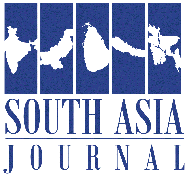
A money vendor counts notes at his stall in Dhaka. © Reuters
DHAKA — Rubel Ahmed Joy now finds it easier to send remittances back home to Bangladesh after the country’s banks stabilized access to key services under the new government.
The 21-year-old went to Saudi Arabia in 2020 and has been sending 80% of his monthly wages to his parents in the small village of Panchani in the Chandpur District of Bangladesh.
Working as an air-conditioning technician at Almana Hospital in Dammam, Saudi Arabia, Joy says he is now more likely to send remittances through banking channels instead of the riskier, unregulated hundi method of IOUs issued by middlemen.
“I send most of my monthly salary to my parents. Other Bangladeshi migrant workers at this hospital are doing the same,” he said, giving a gross estimate of about 5,000 workers from Bangladesh at the facility.
Talking to Nikkei Asia over WhatsApp, Joy sounds excited to be getting better and more consistent exchange rates through the banks, which has been made possible by the friendly policies introduced by the interim administration Muhammad Yunus following the ouster of former Bangladesh Prime Minister Sheikh Hasina in August 2024.
Joy is among the hundreds of thousands of wage-earners, mostly either unskilled or low skilled, who have been lifting their households out of poverty for the past decades through overseas remittances. With better access to efficient banking services, such workers are helping heal Bangladesh’s economic wounds caused by poor governance, alleged corruption and financial scams during the Hasina regime.
Inward remittance had long been a cornerstone of Bangladesh’s economy, but in a time of ongoing crisis it has become more than a blessing.
Earlier this month, Bangladesh Bank, the country’s central bank, announced the highest remittance inflow for a single month in the country’s history at $3.29 billion, marking 64% year-on-year growth and going far above the recent monthly average of $2.3 billion. If the trend continues, the annual total for the fiscal year ending June could reach $30 billion, setting a new record of remittance inflow in a single year.
That will significantly boost the country’s gross foreign exchange reserves. As of March, the reserves stood at $25.5 billion, which only covers import payments for less than five months, down from a record high of $48 billion in August 2021.
In recent years, remittances inflows declined as the traditional hundi operations floundered in the wide gap between official and unofficial exchange rates, as well as through capital flight from shady banking institutions under the old government.
But along with good export earnings, the remittance surge helped to stabilize not only the foreign exchange rate and rebuild forex reserves but also reduce external debt. With the strong remittance base, the government repaid $2.64 billion in foreign debts in eight months, minimizing the widespread concerns over international payment default.
Arief Hossain Khan, executive director and official spokesperson of the Bangladesh Bank, said that the central bank played a leading role in improving the remittances inflow, with the help of the country’s commercial banks as well.
According to Khan, messages had been sent to Bangladeshi community leaders in the Middle East that wage-earners must send remittances through formal channels to register newly purchased land or other immovable properties, which led a significant number of expatriates to start sending remittances through banks.
Apart from that, the Yunus administration’s anti-corruption and money laundering drives, as well as a 2.5% government incentive, are also said to have increased formal remittances through banking channels.
On Thursday, the final day of his four-day visit to Qatar, Yunus praised Bangladeshis working in the country.
“You are helping Bangladesh become stronger by overcoming the challenges and helping the economy to bounce back,” Yunus said, adding, “We are in a stronger position because of you.”
Rising remittances have helped Bangladesh’s economy regain a degree of self-reliance with respect to foreign exchange reserves, too.
Facing plummeting reserves, Bangladesh approached the International Monetary Fund (IMF) and was approved for a $4.7 billion loan in January 2023. It was followed by disbursements of $476.2 million in February 2023, $681 million in December 2023 and $1.15 billion in June 2024. Even though the fourth tranche has been delayed for several months, the country reduced overdue import bills from $445 million to $88 million over the past five months.
After a weekslong mission in Dhaka, the IMF’s mission chief Chris Papageorgiou praised Bangladesh’s economic recovery trends in a news briefing last week. “Bangladesh is seeing a very good progress in sense of recovery and macroeconomic stability since the uprising last summer [that ousted the Hasina regime].”
Mustafizur Rahman, economist and distinguished fellow of the Center for Policy Dialogue, says that the ongoing macroeconomic situation became favorable thanks to the remittance inflow, which he believes will convince the IMF to disburse the fourth tranche of funding in June.
Syed Mahbubur Rahman, managing director of Mutual Trust Bank and former chairman of the Association of Bankers Bangladesh, said increasing inward remittances helped to make the Bangladeshi taka stronger.
“The surge in remittance inflow has become a testament to the resilience of our economy,” said Rahman.
The article appeared in the asia.nikkei


